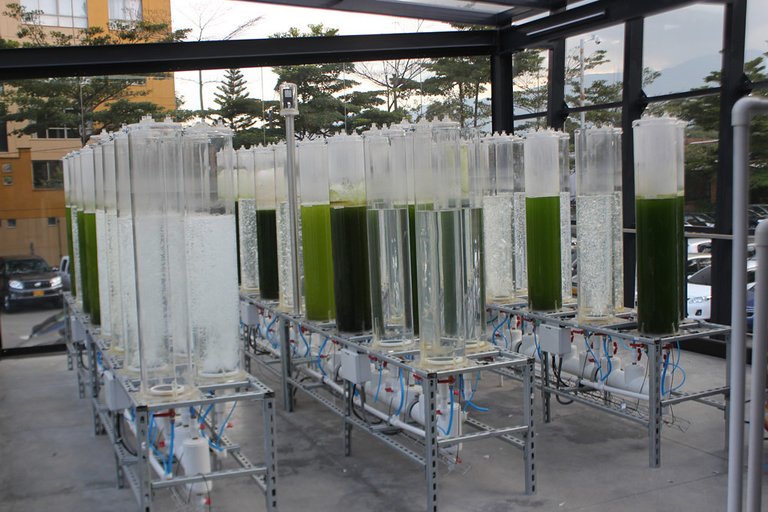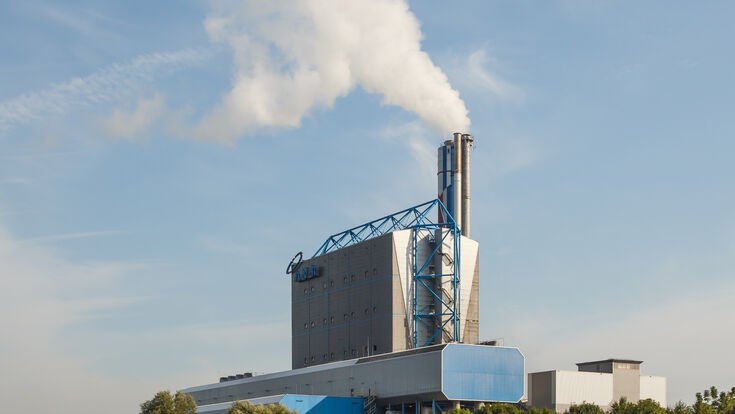You must have heard of the Tubular Algae Bioreactor or some other type of technological solution regarding climate change. With the increase in climate change especially carbon dioxide, technologies are being created so as to absorb the gas from the atmosphere in other to create a circular carbon economy where the carbon created from one process is absorbed and used to fuel the process itself and in doing so a carbon neutral loop is created.
At the beginning of this post, I made mention of Algae and this is because they are very good at removing CO2 from the environment. From Tubular Algae Bioreactor to vertical bubble columns scientists are using them to remove CO2 from the atmosphere. Their effectiveness in removal of this gas is impressive as 1kg of algae can absorb about 1.8kg of carbon dioxide but sequestration hasn't been an easy act as it required land and water to get it to work but scientists are looking towards better alternatives.
In 2021, biocomposite was turned to as a way of using Algae to capture CO2. This was published in a research paper where one natural material and a synthetic material is used to create the biocomposite or a carbon-capturing sheet. The researchers used Chlorella vulgaris and coated textile to be make the carbon capturing sheet. With this, the algae is able to hang on to the textile and grow more while capturing CO2 better. The researchers found that compared to algae that weren't grown on fabrics, their carbon-capturing sheet was able to absorb carbon about 3 time to 14 times more with low water and low maintenance.
While the carbon-capturing sheet is great, we cannot deny that we are in a world were we use fuel for almost everything so how do we convert our CO2 to fuel. When we talk about fuel, it has to do with a compound reacting with oxygen to produce energy which we then harness to for power. While CO2 is not fuel, we cannot deny that majority of our fuel is a combination of carbon and oxygen which means it is the backbone of most fuels.
On the matter of fuel and converting carbon dioxide back to fuel, scientists are looking at Jet fuel. Currently we are producing a lot with gasoline and car fuel but in the future people are going to be able to afford to fly and at this time we will be releasing more CO2 to cars. We actually want to stop using fossil fuels to produce energy but this is not going to be easy and it will take a while.
You wonder why they do not look at the normal gasoline and the answer is that they will look at it as well but for now, the carbon atoms in gasoline is around 7 to 11 carbons while the carbon atom in jet fuel is about 12 to 15 carbon atoms which means that jet fuel releases more carbon than gasoline. Researchers were able to take carbon dioxide molecules and turn them to jet fuel and this was done using a metal catalyst from Iron (Fe), Manganese (Mn), and Potassium (K).
They inserted a stainless steel reactor with carbon dioxide after which they added the metal catalyst and heated it up to 350 degrees celsius for it to produce jet fuel with similar carbon atom. This is still being researched on but if the carbon emitted from airplane is being absorbed and converted back to fuel for the airplane, then it would help reduce the amount of carbon emitted.
Recycling CO2 for our use is a good one. Researchers are already captureing carbon dioxide and are using them to create methanol which can be useful as fuel for car. To make the methanol, Carbon dioxide is captured and combined with hydrogen in the right pressure in the presence of a catalyst which are copper, and zinc.
Another way we are releasing carbon dioxide and a lot of harmful byproduct is in the production of Urea for fertilizers. Producing urea done by adding Ammonia and Carbon dioxide in the presence of heat but scientists are looking into how to make urea that reuses CO2.In 2020, researchers used a flow reactor cell and a catalyst made of Palladium-copper nanoparticles attached to titanium dioxide nanosheet, and this allowed for the reaction od CO2 and Nitrogen to form urea with less energy being used unlike traditional method thereby reusing carbon dioxide made from producing Urea.
Scientist is looking at recycling the CO2 we release into the atmosphere so as to be able to reduce the amount of CO2 in the atmosphere while allowing us to be able to reuse them for fuel purposes or other purposes.
Reference
https://www.sciencedirect.com/topics/engineering/hydrogenation-process
https://www.sciencedirect.com/science/article/abs/pii/B9780444634726000070
https://www.nature.com/articles/s41467-020-20214-z
https://www.epa.gov/ghgemissions/global-greenhouse-gas-overview
https://www.chemistryworld.com/news/new-cheaper-catalyst-turns-carbon-dioxide-into-jet-fuel/4012981.article
https://www.wired.com/story/could-carbon-dioxide-be-turned-into-jet-fuel/
https://www.smithsonianmag.com/smart-news/new-process-uses-iron-turn-carbon-dioxide-jet-fuel-180976654/
https://www.azocleantech.com/article.aspx?ArticleID=1242
https://journals.sagepub.com/doi/full/10.1177/15280837211025725
https://www.azom.com/news.aspx?newsID=57662
https://www.nature.com/articles/s41557-020-0481-9
https://www.sciencedirect.com/topics/engineering/hydrogenation-process https://www.sciencedirect.com/science/article/abs/pii/B9780444634726000070 https://www.nature.com/articles/s41467-020-20214-z https://www.epa.gov/ghgemissions/global-greenhouse-gas-overview https://www.chemistryworld.com/news/new-cheaper-catalyst-turns-carbon-dioxide-into-jet-fuel/4012981.article https://www.wired.com/story/could-carbon-dioxide-be-turned-into-jet-fuel/ https://www.smithsonianmag.com/smart-news/new-process-uses-iron-turn-carbon-dioxide-jet-fuel-180976654/ https://www.azocleantech.com/article.aspx?ArticleID=1242 https://journals.sagepub.com/doi/full/10.1177/15280837211025725 https://www.azom.com/news.aspx?newsID=57662 https://www.nature.com/articles/s41557-020-0481-9



Thanks for your contribution to the STEMsocial community. Feel free to join us on discord to get to know the rest of us!
Please consider delegating to the @stemsocial account (85% of the curation rewards are returned).
Thanks for including @stemsocial as a beneficiary, which gives you stronger support.